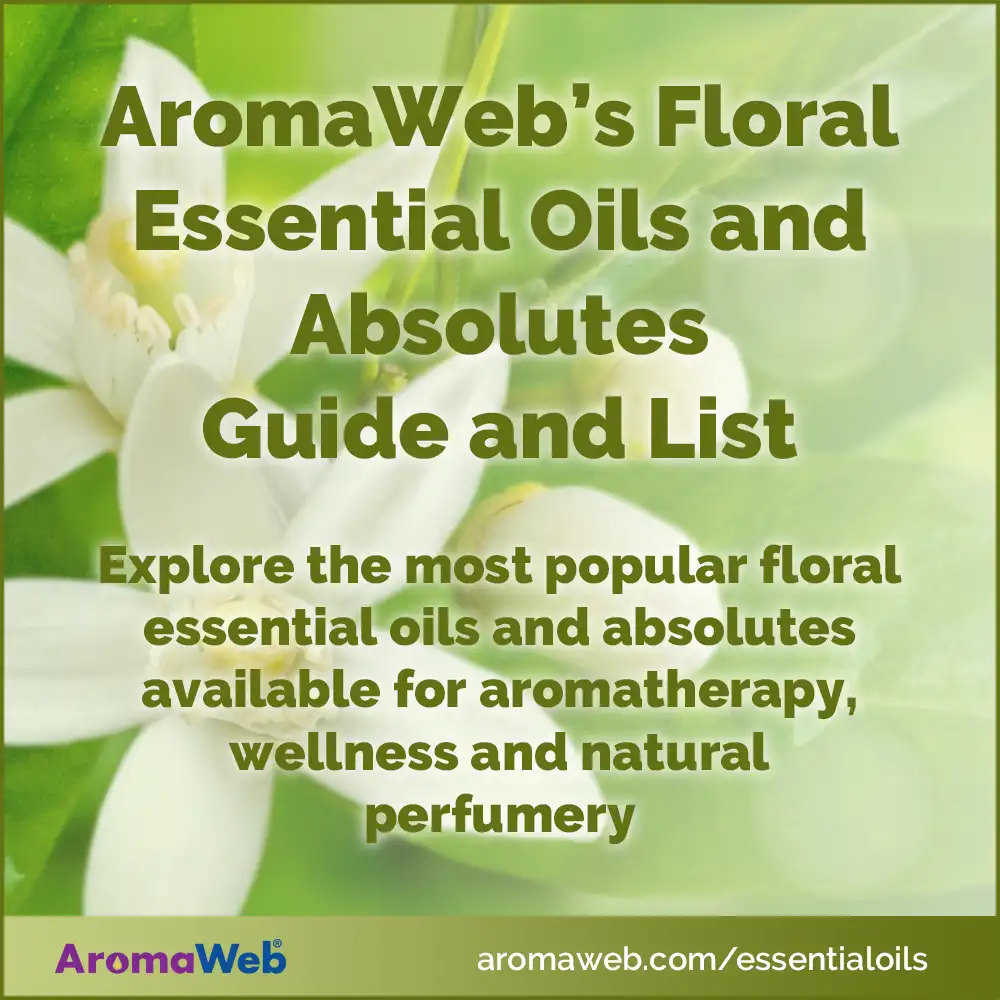Floral Essential Oils and Absolutes Guide
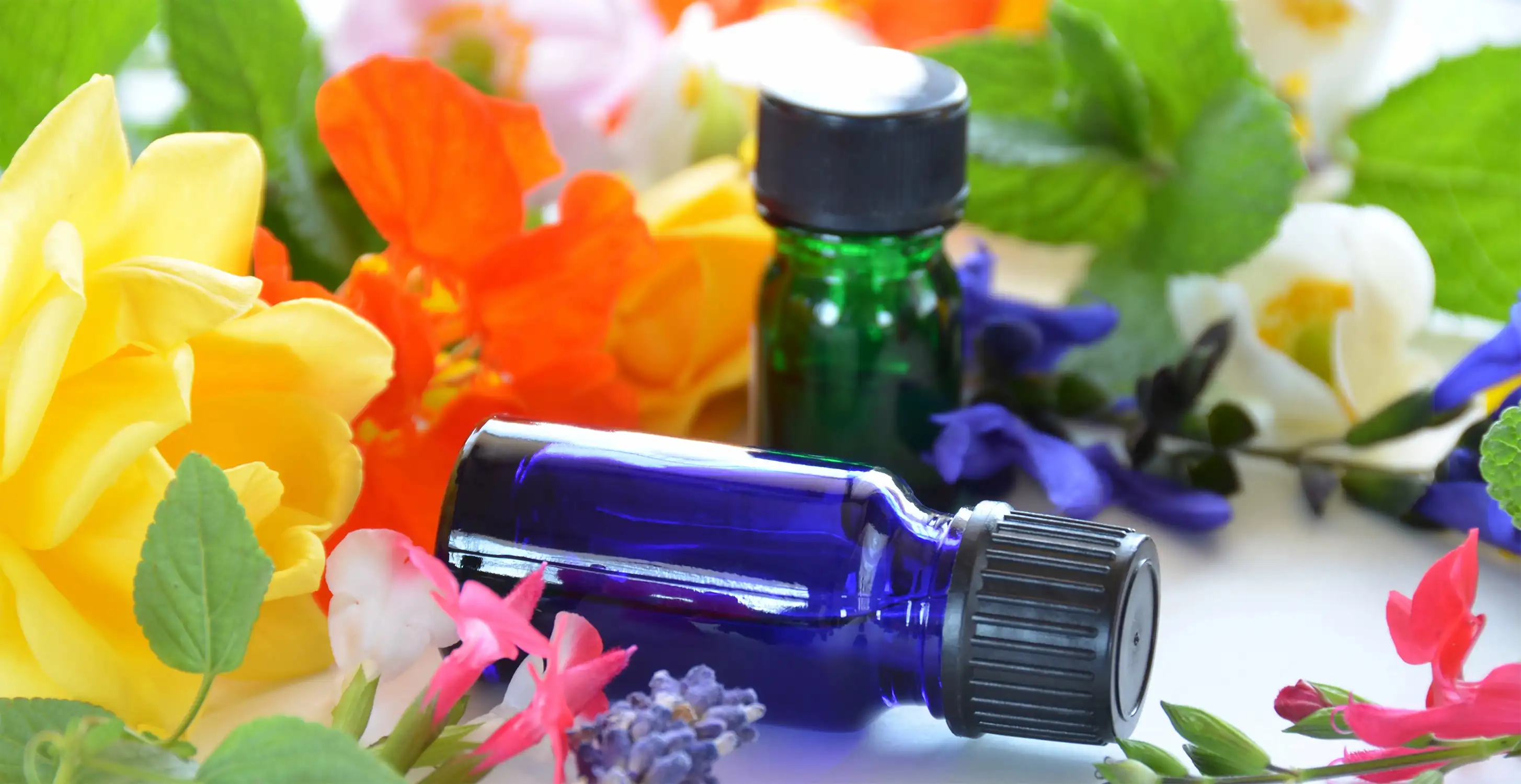
Floral Oil Guide Sections:
- Introduction to Floral Essential Oils and Absolutes
- Uses and Benefits of Floral Essential Oils
- General Safety Information for Floral Essential Oils
- Shelf Life of Floral Essential Oils and Floral Absolutes
- Aromatic Differences Between Floral Essential Oils
- Top 10 Primary Floral Essential Oils and Absolutes
- Detailed List of Floral Essential Oils and Absolutes
- Conservation Status
- References
Introduction to Floral Essential Oils and Absolutes
By definition, Floral Essential Oils, Absolutes and CO2 Extracts are derived from a plant's blossoms, buds or blooms. Some floral oils may also contain the leaves or other aerial parts of the plant.
For the sake of brevity, I primarily refer to essential oils in this guide. However, most of the information presented in this guide is also applicable to absolutes and CO2 extracts.
The Uses and Benefits of Floral Essential Oils
Generally speaking, floral essential oils and absolutes tend include essential oils like Lavender and Neroli that are wonderful for use in skin care, emotional well-being and mental health support. Others like Helichrysum Italicum and German Chamomile have a less typical "e;floral" aroma but are wonderful anti-inflammatories.
Floral Essential Oils is a broad category designation, and it's important that you study the composition, benefits and safety considerations for each floral essential oil that you consider using.
General Safety Information for Floral Essential Oils
Many floral essential oils are safe to use when properly diluted, but some like Tagetes require greater care and precaution. It's important that you research and heed the precautions and safety information for each essential oil that you use.
The Shelf Life of Floral Essential Oils and Floral Absolutes
Typically, floral essential oils have a longer shelf life than essential oils from the citrus and conifer families when they are stored properly. However, essential oil shelf life can be difficult to gauge. Read AromaWeb's Guide to Essential Oil Shelf Life and AromaWeb's answer to the question Do Essential Oils Expire? for more information.
Aromatic Differences Between Floral Essential Oils
As touched on above, Floral Essential Oils, Absolutes and CO2 Extracts are similar because they include the flowering portion of a plant. However, the overall aroma and composition can vary greatly between floral oils.
Top 10 Primary Floral Essential Oils and Absolutes
Some essential oils like German Chamomile, Goldenrod and Helichrysum Italicum are distilled from the flowering tops of the plant, but do not offer the traditional aroma that many of us tend to perceive as the aroma of what we definite as floral essential oil. However, they still are classified as Floral Essential Oils.
Below is a quick list of the top 10 essential oils that possess an aroma that we traditionally associate as being floral in nature. Each of these 10 essential oils is also included in the more detailed list of floral oils and absolutes shown further down on this page.
Detailed List of Floral Essential Oils and Absolutes
The below list includes most all essential oils and absolutes on AromaWeb that are derived from the flowering portion of a plant. Some floral oils may also contain the leaves or other aerial parts of the plant. Click on the links to view the detailed essential oil profile for the floral essential oil. Each profile includes the aromatic description for the oil.
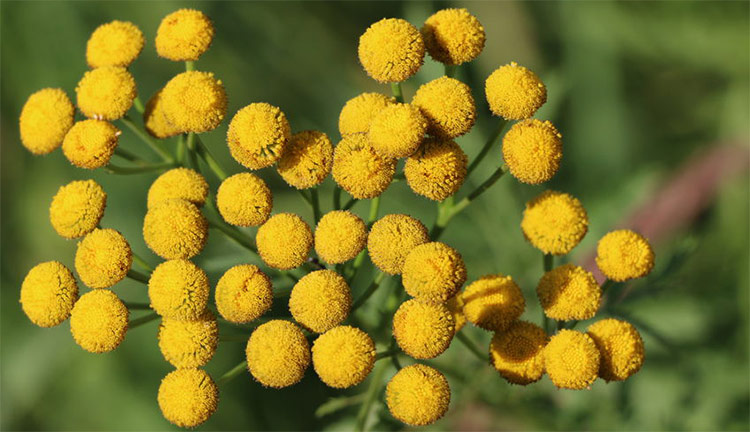
Blue Tansy Essential Oil
Botanical Name: Tanacetum annuum
Plant Family: Asteraceae
Plant Part(s) Typically Distilled: Flowers/Buds and Sometimes Leaves
Conservation Status: Not Classified by IUCN*
Learn More About Blue Tansy Essential Oil
Boronia Absolute
Botanical Name: Boronia megastigma
Plant Family: Rutaceae
Plant Part(s) Typically Distilled: Flowers
Conservation Status: Not Classified by IUCN*
Learn More About Boronia Absolute
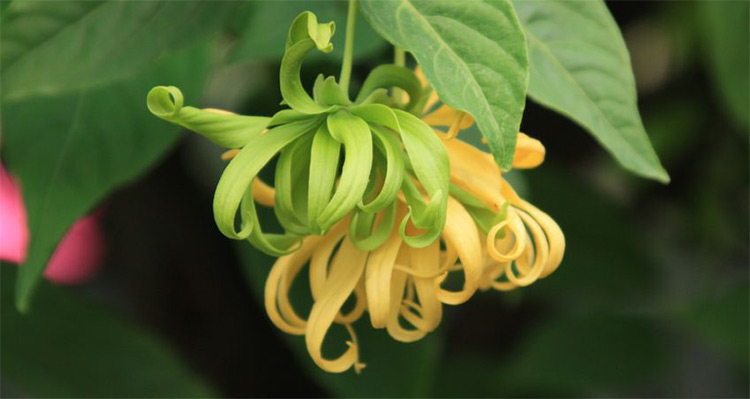
Cananga Essential Oil
Botanical Name: Cananga odorata / Cananga odorata var macrophylla
Plant Family: Annonaceae
Plant Part(s) Typically Distilled: Flowers
Conservation Status: Least Concern*
Learn More About Cananga Essential Oil
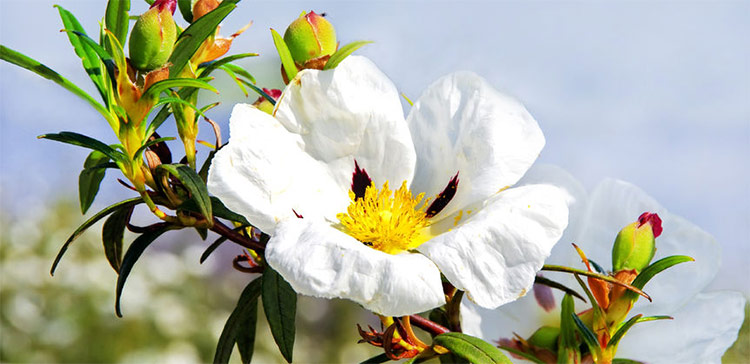
Cistus Essential Oil (Rock Rose)
Botanical Name: Cistus ladaniferus
Plant Family: Cistaceae
Plant Part(s) Typically Distilled: Flowers and Leaves
Conservation Status: Not Classified by IUCN*
Learn More About Cistus Essential Oil
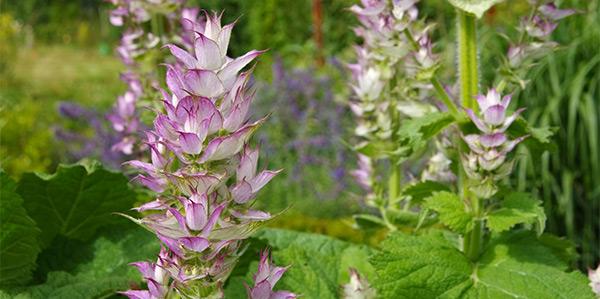
Clary Sage Essential Oil
Botanical Name: Salvia sclarea
Plant Family: Lamiaceae
Plant Part(s) Typically Distilled: Leaves and Flowers/Buds
Conservation Status: Not Classified by IUCN*
Learn More About Clary Sage Essential Oil
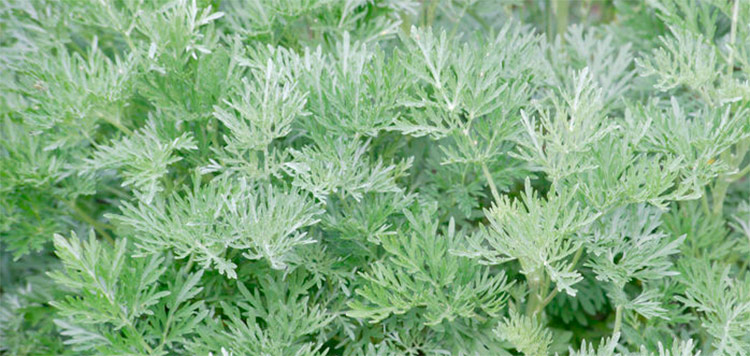
Davana Essential Oil
Botanical Name: Artemisia pallens
Plant Family: Asteraceae
Plant Part(s) Typically Distilled: Flowers and Leaves
Conservation Status: Not Classified by IUCN*
Learn More About Davana Essential Oil
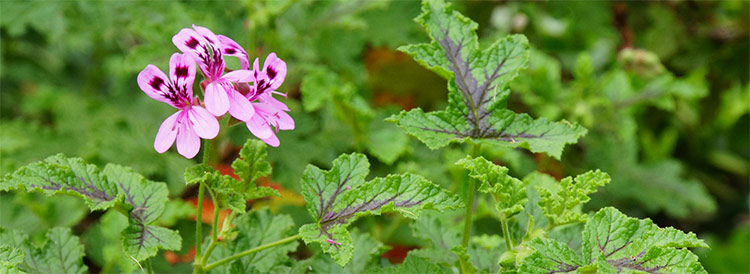
Geranium Essential Oil
Botanical Name: Pelargonium graveolens / Pelargonium asperum
Plant Family: Geraniaceae
Plant Part(s) Typically Distilled: Leaves
Although Geranium Essential Oil is primarily distilled from the leaves of the plant, it is often categorized and perceived of as a floral oil.
Conservation Status: Not Classified by IUCN*
Learn More About Geranium Essential Oil
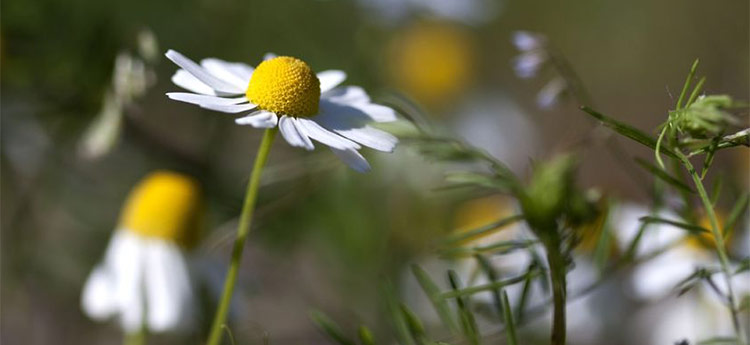
German Chamomile Essential Oil (Blue Chamomile)
Botanical Name: Matricaria recutita / Matricaria chamomilla
Plant Family: Asteraceae
Plant Part(s) Typically Distilled: Flowers/Buds
Conservation Status: Not Classified by IUCN*
Learn More About German Chamomile Essential Oil
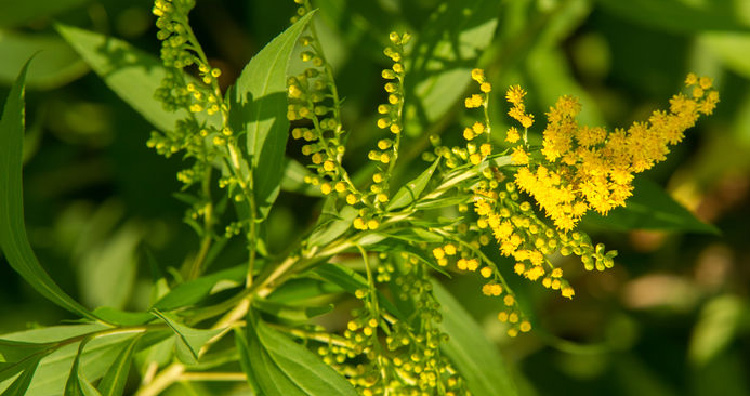
Goldenrod Essential Oil
Botanical Name: Solidago canadensis
Plant Family: Asteraceae
Plant Part(s) Typically Distilled: Flowering Tops
Conservation Status: Not Classified by IUCN*
Learn More About Goldenrod Essential Oil
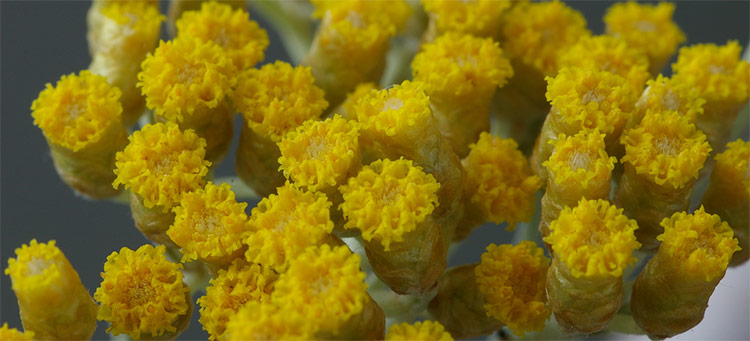
Helichrysum Italicum Essential Oil (Immortelle Essential Oil)
Botanical Name: Helichrysum italicum / Helichrysum angustifolia
Plant Family: Asteraceae
Plant Part(s) Typically Distilled: Flowers
Conservation Status: Not Classified by IUCN*
Learn More About Helichrysum Italicum Essential Oil
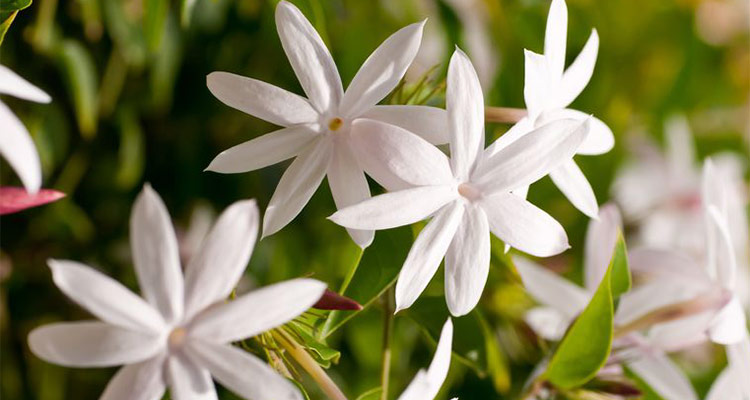
Jasmine Absolute
Botanical Name: Jasminum grandiflorum or Jasminum_sambac
Plant Family: Oleaceae
Plant Part(s) Typically Used: Flowers
Conservation Status: Not Classified by IUCN*
Learn More About Jasmine Absolute

Lavender Essential Oil
Lavender Absolute and Lavender CO2 Extract are also available.
Botanical Name: Lavandula angustifolia / Lavandula officinalis
Plant Family: Lamiaceae
Plant Part(s) Typically Distilled: Leaves and Flowers/Buds
Conservation Status: Not Classified by IUCN*
Learn More About Lavender Essential Oil
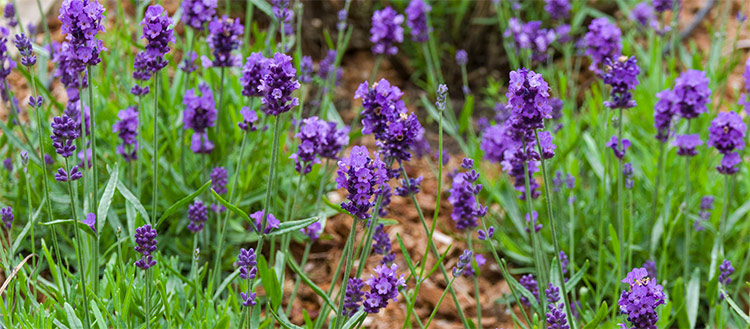
Lavandin Essential Oil
Botanical Name: Lavandula abrialis / Lavandin Abrialis, Lavandula intermedia or Lavandula hybrida
Plant Family: Lamiaceae
Plant Part(s) Typically Distilled: Leaves and Flowers/Buds
Conservation Status: Not Classified by IUCN*
Learn More About Lavandin Essential Oil
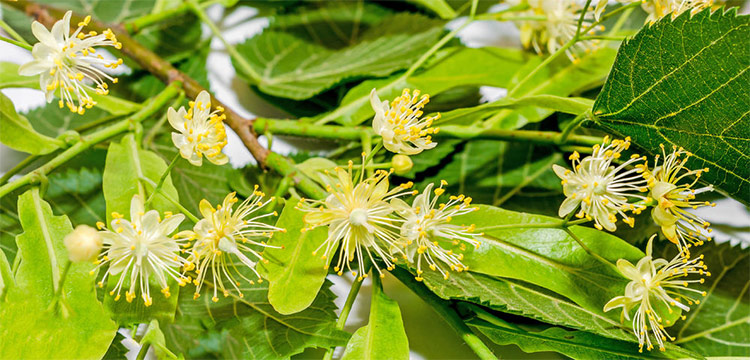
Linden Blossom Absolute (Lime Blossom Absolute)
Botanical Name: Tilia vulgaris / Tilia cordata
Plant Family: Tiliaceae
Plant Part(s) Typically Distilled: Blossoms
Conservation Status: Least Concern*
Learn More About Linden Blossom Absolute
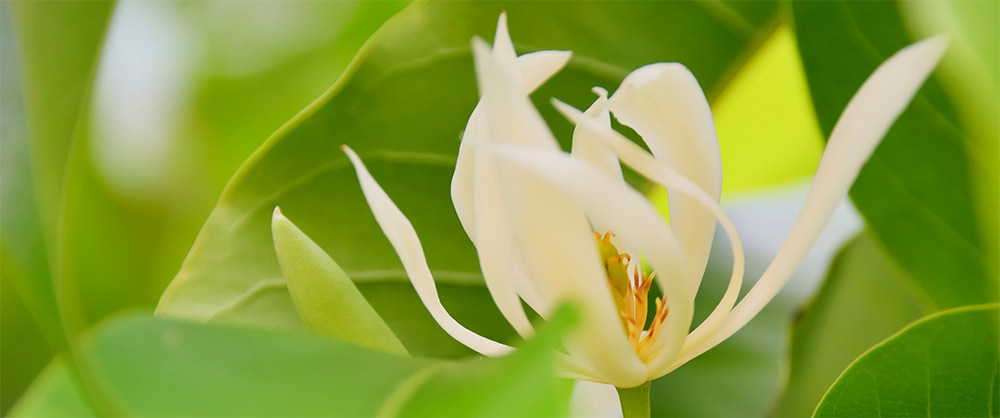
Magnolia Essential Oil (White Champaca)
Botanical Name: Michelia alba
Plant Family: Magnoliaceae
Plant Part(s) Typically Distilled: Flowers
Conservation Status: Not Classified by IUCN*
Learn More About Magnolia Essential Oil
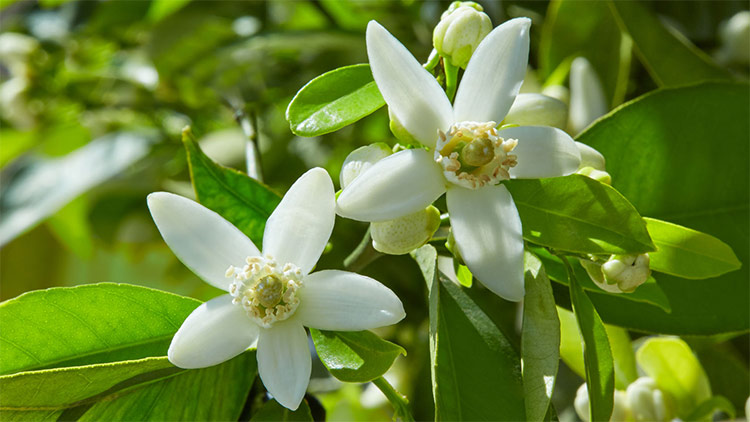
Neroli Essential Oil
Botanical Name: Citrus aurantium
Plant Family: Rutaceae
Plant Part(s) Typically Distilled: Blossoms
Conservation Status: Not Classified by IUCN*
Learn More About Neroli Essential Oil
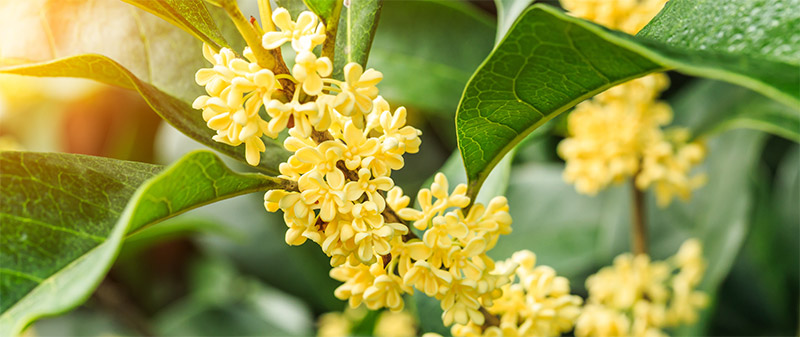
Osmanthus Absolute
Botanical Name: Osmanthus fragrans
Plant Family: Oleaceae
Plant Part(s) Typically Distilled: Flowers / Blossoms
Conservation Status: Not Classified by IUCN*
Learn More About Osmanthus Absolute
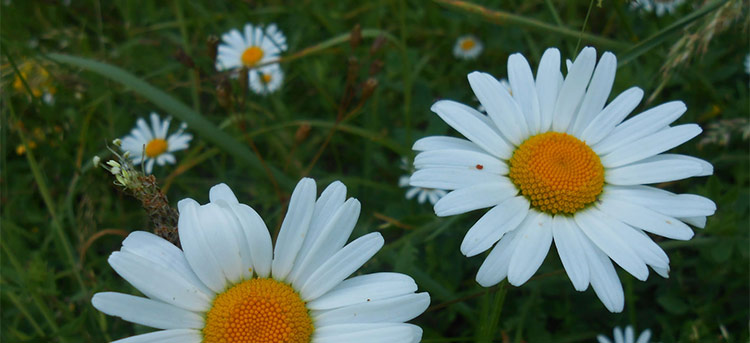
Roman Chamomile Essential Oil
Botanical Name: Anthemis nobilis/ Chamaemelum nobile
Plant Family: Asteraceae
Plant Part(s) Typically Distilled: Flowers/Buds
Conservation Status: Least Concern*
Learn More About Roman Chamomile Essential Oil
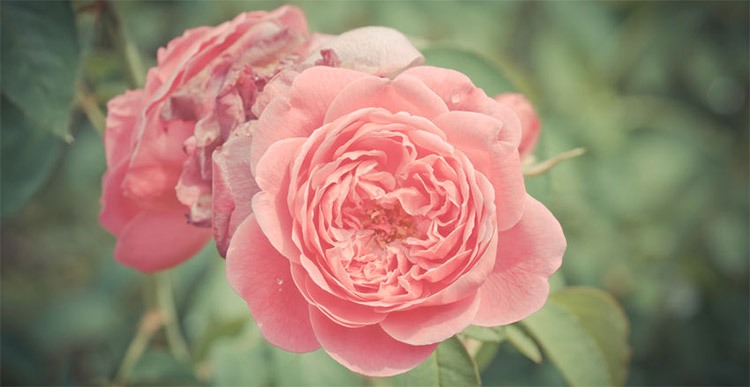
Rose Otto Essential Oil, Rose CO2 Extract and Rose Absolute
Botanical Name: Rosa damascena
Plant Family: Rosaceae
Plant Part(s) Typically Distilled: Flowers / Petals
Conservation Status: Not Classified by IUCN*
Learn More About Boronia Absolute
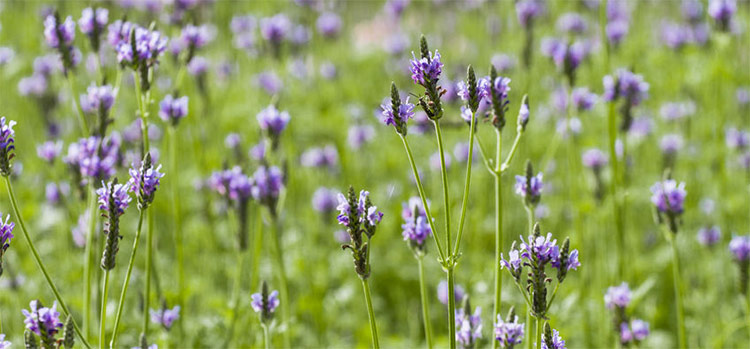
Spike Lavender Essential Oil
Botanical Name: Lavandula latifolia
Plant Family: Lamiaceae
Plant Part(s) Typically Distilled: Leaves and Flowers/Buds
Conservation Status: Not Classified by IUCN*
Learn More About Spike Lavender Essential Oil
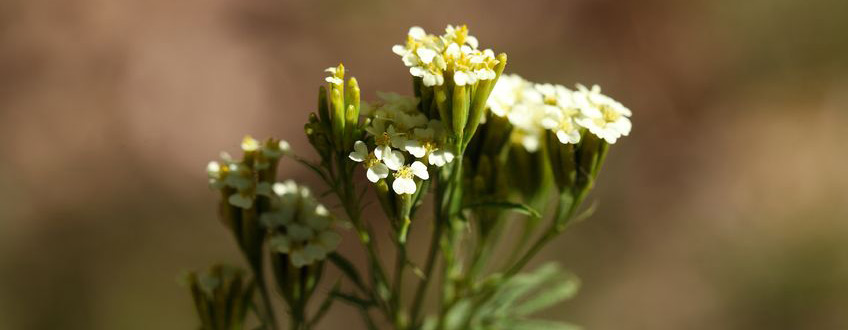
Tagetes Essential Oil
Botanical Name: Tagetes minuta
Plant Family: Asteraceae
Plant Part(s) Typically Distilled: Flowers
Conservation Status: Not Classified by IUCN*
Learn More About Tagetes Essential Oil
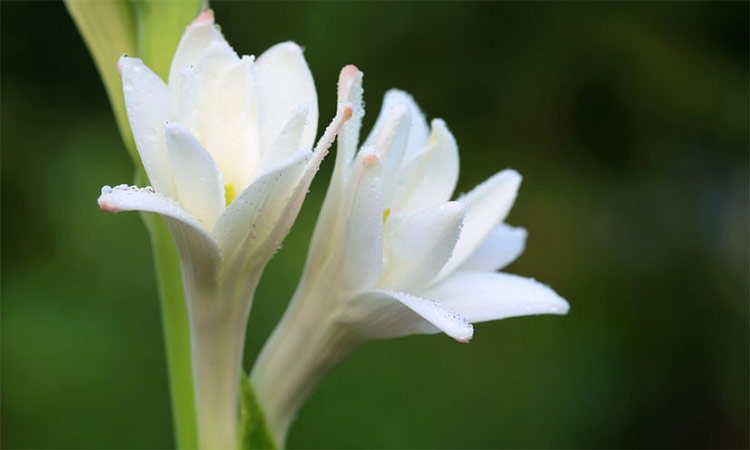
Tuberose Absolute
Botanical Name: Polianthes tuberosa
Plant Family: Agavaceae
Plant Part(s) Typically Distilled: Flowers
Conservation Status: Not Classified by IUCN*
Learn More About Tuberose Absolute
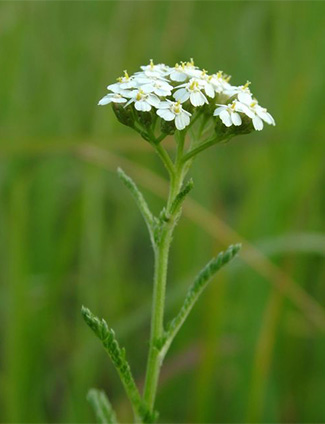
Yarrow Essential Oil
Botanical Name: Achillea millefolium
Plant Family: Asteraceae
Plant Part(s) Typically Distilled: Leaves and Flowers/Buds
Conservation Status: Least Concern*
Learn More About Yarrow Essential Oil
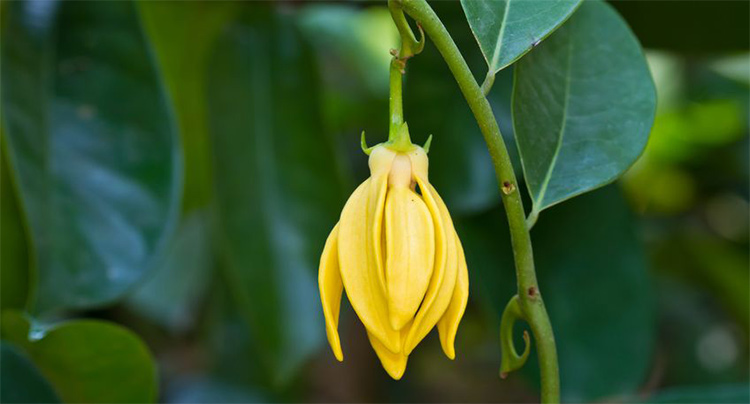
Ylang Ylang Essential Oil
Botanical Name: Cananga odorata var genuina
Plant Family: Annonaceae
Plant Part(s) Typically Distilled: Flowers
Conservation Status: Not Classified by IUCN*
Learn More About Ylang Ylang Essential Oil
*Conservation Status
It's so important that we are each mindful of the conservation status of the trees and plants that are used in the distillation of the oils that we purchase and work with. The conservation status information that appears in this guide and that you see included on most of AromaWeb's essential oil profiles comes from the IUCN Red List of Threatened Species. IUCN stands for the International Union for Conservation of Nature. To learn more about the conservation status of essential oil bearing plants and how to use the IUCN Red List of Threatened Species, please refer to AromaWeb's Guide to Essential Oils and Sustainability.
References
- Robert Tisserand and Rodney Young, Essential Oil Safety (Second Edition. United Kingdom: Churchill Livingstone Elsevier, 2014).
- Steffen Arctander, Perfume and Flavor Materials of Natural Origin (Reprint Edition. Elizabeth, NJ: Pathfinder, 2017).
- Salvatore Battaglia, The Complete Guide to Aromatherapy Third Edition Volume 1 - Foundations & Materia Medica (Brisbane Australia: Black Pepper Creative, 2018).
- Neryls Purchon and Lora Cantele, Complete Aromatherapy & Essential Oils Handbook for Everyday Wellness (Toronto ON: Robert Rose, 2014).
General Safety Information
Do not take any oils internally and do not apply undiluted essential oils, absolutes, CO2s or other concentrated essences onto the skin without advanced essential oil knowledge or consultation from a qualified aromatherapy practitioner. For general dilution information, read AromaWeb's Guide to Diluting Essential Oils. If you are pregnant, epileptic, have liver damage, have cancer, or have any other medical problem, use oils only under the proper guidance of a qualified aromatherapy practitioner. Use extreme caution when using oils with children and be sure to first read the recommended dilution ratios for children. Consult a qualified aromatherapy practitioner before using oils with children, the elderly, if you have medical issues or are taking medications. Before using this or any essential oil, carefully read AromaWeb's Essential Oil Safety Information page. For in-depth information on oil safety issues, read Essential Oil Safety by Robert Tisserand and Rodney Young.
Shelf Life
Important Information About the Profiles
The essential oil information provided on AromaWeb is intended for basic educational purposes only. The references to safety information, test results, constituents and percentages is generalized information. Essential oils can vary greatly in composition. The data is not necessary complete and is not guaranteed to be accurate. The essential oil photos are intended to represent the typical and approximate color of each essential oil. However, essential oil composition and color can vary based on harvesting, distillation, age of the essential oil and other factors. Profiles for several CO2 Extracts and absolutes are included within the directory, and are denoted as such.
